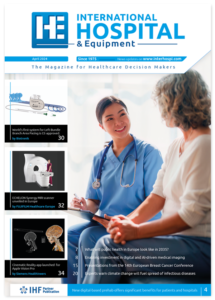Magnetic stimulation effective in helping Parkinson’s patients walk
About 50% of patients with Parkinson’s disease (PD) experience freezing of gait (FOG), an inability to move forward while walking. This can affect not only mobility but also balance. In a new study, researchers report that repetitive transcranial magnetic stimulation (rTMS) can reduce FOG and improve other motor skills in PD patients.
In a study conducted by researchers at the Sungkyunkwan University School of Medicine, Seoul, Korea, 17 PD patients experiencing FOG were treated with either real or sham high-frequency rTMS in five sessions over a one-week period. After a two-week interval, the patients in both groups were switched to the other treatment. Patients were assessed at three times: at the beginning of the study before stimulation began (pre-rTMS at day 1), immediately after the intervention (post-rTMS at day 5), and one week after cessation of the intervention (follow up at day 12). After switching, the three assessments were repeated. All medications were kept constant throughout the study and all interventions were performed at the same time of day. Both the researchers and the patients were not informed whether real or sham treatment was being administered.
‘This study demonstrated that five cumulative sessions a week of 10 Hz high-frequency rTMS was likely to alleviate FOG in patients with PD, and the effect continued for a week. Similar results were found in the motor and the gait function,’ explained lead investigator Yun-Hee Kim, MD, PhD, Professor in the Department of Physical and Rehabilitation Medicine, Samsung Medical Center, Sungkyunkwan University School of Medicine, Seoul, Republic of Korea. ‘This study provides evidence that the cumulative high-frequency rTMS is a good candidate as an add-on therapy for FOG in PD.’
The location in each patient’s scalp for optimal stimulation of the anterior tibialis muscle (the front of lower leg) was mapped by stimulating the muscle and moving a pickup coil over the scalp to find the greatest response. This position was then used for each treatment.
A magnetic stimulator was placed and 20 pulses of 10 Hz rTMS were delivered to the target motor cortex areas of the dominant hemisphere. Each pulse lasted five seconds, with 55-second intervals between pulses, delivering 1,000 pulses in 20 minutes. Sham stimulation was conducted with a coil held at a 90 degree position in order to ensure that the magnetic field did not stimulate the motor cortex.
Patients were evaluated after treatments using the FOG-Q, a self-assessment scale for evaluating FOG symptoms in Parkinson’s syndrome. In addition, participants were instructed to walk to a target (traffic cone) one meter behind them, turn around, and then return, as part of a Timed-Up-and-Go (TUG) task during a modified Standing-Start 180 degree Turn Test (SS-180). The TUG task was repeated twice in each direction, and the entire process was video recorded to quantify FOG.
When patients underwent real treatment, the FOG-Q and TUG at post-rTMS significantly improved compared with pre-rTMS and these results continued into the follow up period. However, there were no significant changes in FOG-Q or TUG at post-rTMS and follow-up in patients when experiencing the sham treatment. EurekAlert

